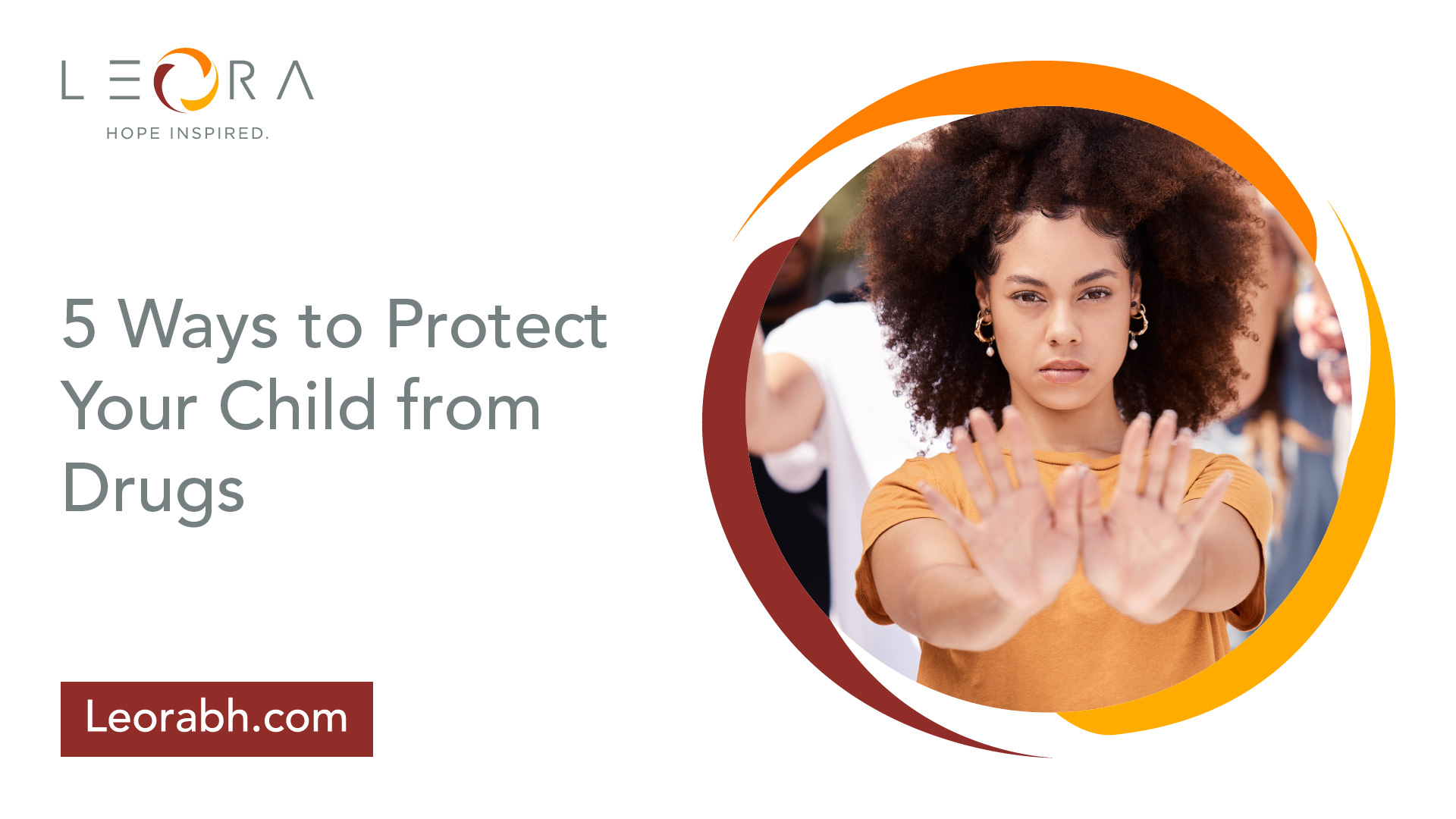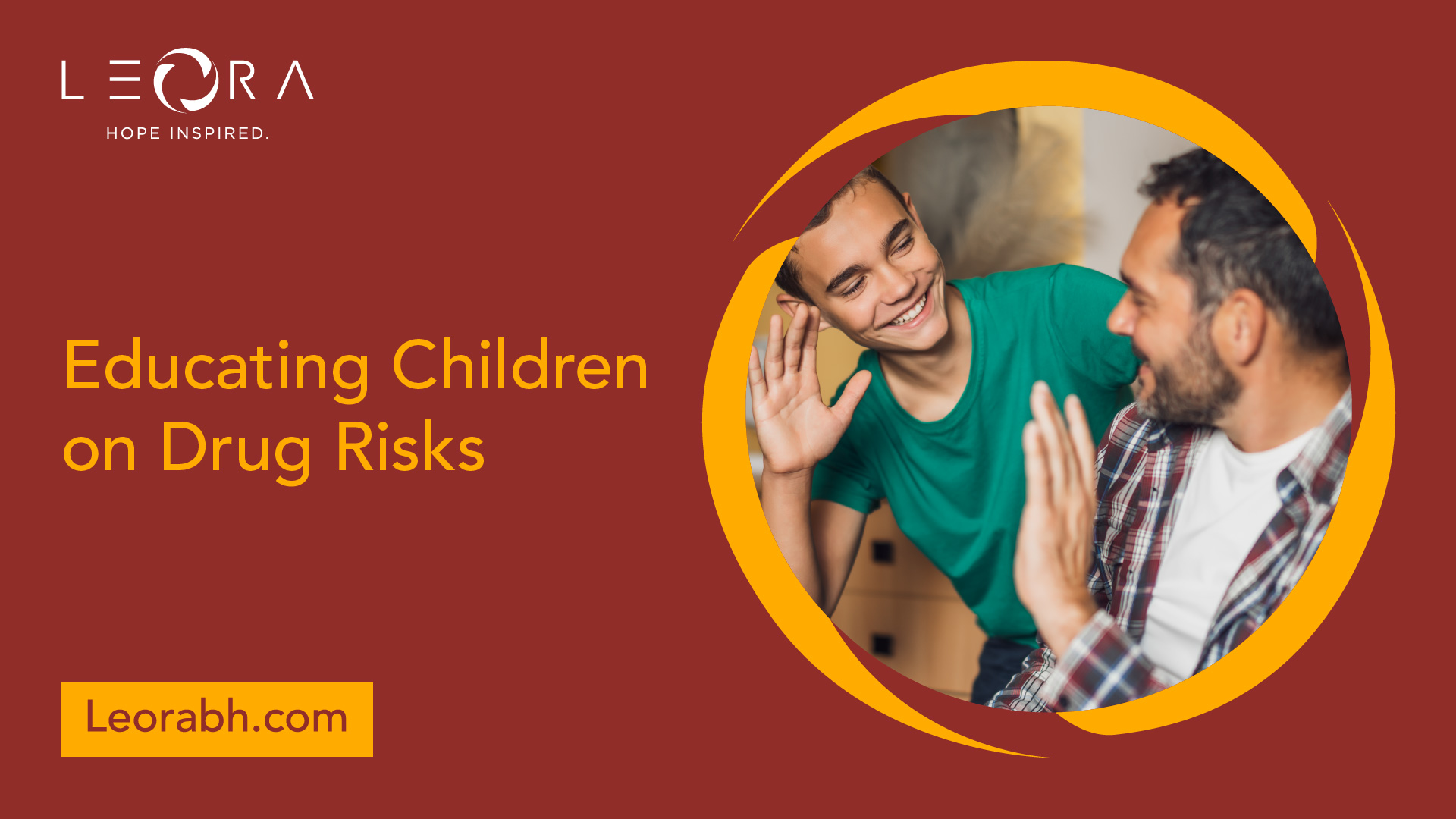5 Ways to Protect Your Child from Drugs
Discover 5 powerful ways to safeguard your child from drugs. Equip yourself with essential knowledge and preventive strategies.
Understanding Teen Drug Exposure
In order to effectively protect children from the risks of drug abuse, it is essential to understand the factors that contribute to teen drug exposure. This section will explore the impact of parental influence and the importance of communication and awareness in preventing drug abuse.

Impact of Parental Influence
Parents play a significant role in shaping their child's attitudes and behaviors, including their perception of drugs and substance abuse. According to a study conducted by Drug Free Kids Canada, 63% of teenagers aged 13 to 19 reported that they get their information on drugs from their parents and in the classroom. This highlights the influence parents have in educating their children about the risks associated with drug use.
It is important for parents to be mindful of their own behaviors and habits, as they serve as role models for their children. Children who witness their parents consuming drugs, alcohol, and cigarettes are more likely to engage in similar behavior [1]. Therefore, parents should strive to promote healthy behaviors and demonstrate responsible decision-making when it comes to substances.
Additionally, it is crucial for parents to avoid punitive measures when addressing their child's behavior. Punishing children for failing to meet expectations can lead to a strained relationship and potentially increase the risk of drug abuse [1]. Instead, parents should focus on fostering open and supportive communication, which leads us to the next important aspect of protecting children from drugs.
Communication and Awareness
Lack of communication and awareness within a family can increase the risk of a child experimenting with drugs. It is essential for parents to establish a safe and non-judgmental environment where open discussions about drugs and their consequences can take place. By engaging in regular conversations, parents can educate their children about the negative consequences of drug use, which helps to diffuse the mystique and curiosity surrounding drugs.
Parents should actively listen to their children, be attentive to their concerns, and provide accurate information about drugs and their effects. It is important to address any misconceptions or myths that children may have encountered through peers or media. By fostering an open dialogue, parents can establish trust and encourage their children to approach them with any questions or concerns they may have regarding drugs.
In addition to parent-child communication, it is crucial for parents to stay informed and aware of the current trends and dangers related to substance abuse. This knowledge equips parents with the ability to effectively educate and protect their children from drug abuse.
By understanding the influence of parental behavior and the significance of communication and awareness, parents can take proactive steps in protecting their children from the risks associated with drug use. Building a strong foundation of trust, open dialogue, and accurate information helps to create a supportive environment that empowers children to make informed decisions and resist the pressures of drug abuse.

Educating Children on Drug Risks
When it comes to protecting children from the dangers of drug abuse, education plays a crucial role. By providing children with knowledge about the negative consequences of drug use, parents can help diffuse the mystique and curiosity surrounding drugs. In this section, we will explore two important aspects of educating children on drug risks: understanding negative consequences and role modeling behaviors.
Negative Consequences
One effective way to educate children about the risks of drug use is by emphasizing the negative consequences associated with substance abuse. Parents should openly discuss the physical, mental, and social repercussions that can arise from drug addiction. By providing factual information and real-life examples, children can develop a better understanding of the potential harm drugs can cause.
Some potential negative consequences of drug abuse include:
- Physical health problems: Substance use can lead to a range of physical health issues, including organ damage, respiratory problems, and increased risk of infectious diseases.
- Mental health disorders: Drug abuse can contribute to the development or worsening of mental health disorders, such as anxiety, depression, and psychosis.
- Impaired cognitive function: Substance use can adversely affect memory, attention, and overall cognitive function, impacting academic performance and future opportunities.
- Relationship problems: Drug abuse can strain relationships with family, friends, and romantic partners, leading to conflicts and social isolation.
- Legal issues: Engaging in illicit drug use can result in legal consequences, including arrests, fines, and potential incarceration.
By educating children about these negative consequences, parents can help them make informed decisions and understand the potential long-term implications of drug use.
Role Modeling Behaviors
Children often look to their parents and caregivers as role models. Therefore, it is essential for parents to set a positive example by modeling healthy behaviors and avoiding substance use themselves. Research suggests that children who witness their parents consuming drugs, alcohol, or cigarettes are more likely to engage in similar behavior.
Parents can promote drug-free living by:
- Abstaining from drug use: By refraining from using drugs, parents send a powerful message to their children about the importance of a drug-free lifestyle.
- Avoiding excessive alcohol consumption: Alcohol is a commonly abused substance, and parents should be mindful of their alcohol consumption to demonstrate responsible behavior.
- Quitting smoking: Smoking is not only harmful to one's health but can also normalize substance use in the eyes of children. Quitting smoking sets a positive example for children.
Open and honest conversations about the dangers of drug use, coupled with consistent role modeling of healthy behaviors, can help children develop strong values and make informed decisions when faced with situations involving drugs.
By educating children about the negative consequences of drug use and setting positive examples through their own behaviors, parents can play a vital role in protecting their children from the risks of drug abuse.

Identifying Risk Factors
To effectively protect children from drug abuse, it is crucial to identify the risk factors that contribute to their vulnerability. By recognizing these factors, parents and caregivers can take proactive measures to mitigate the risks. Two key areas of focus when identifying risk factors are behavioral changes and monitoring the social circle.
Behavioral Changes
Parents should pay close attention to any noticeable behavioral changes in their children, as these can be early indicators of potential drug abuse. Some common behavioral changes to be aware of include:
- Sudden decline in academic performance
- Loss of interest in previously enjoyed activities
- Changes in sleep patterns, such as insomnia or excessive sleep
- Increased secrecy or withdrawal from family and friends
- Uncharacteristic mood swings or irritability
- Unexplained financial difficulties or stealing money
- Frequent requests for money without a valid explanation
- Changes in personal appearance or hygiene
It is important for parents to maintain open lines of communication with their children and create a safe space for them to express their concerns and emotions. By fostering a trusting relationship, parents can encourage their children to share any challenges they may be facing, including potential exposure to drugs.
Monitoring Social Circle
The social circle plays a significant role in influencing a child's behavior and choices. Parents should be vigilant in monitoring their child's friends and acquaintances. Some important factors to consider include:
- Changes in friendship groups or sudden association with new peers
- Known involvement of friends in substance abuse
- Frequenting high-risk environments or locations associated with drug use
- Lack of parental supervision or accountability in social activities
Parents can engage in open conversations with their children about the importance of choosing friends wisely and making informed decisions. Encouraging positive social activities, such as involvement in sports or community organizations, can help divert their attention away from potential negative influences.
By staying attuned to their child's behavioral changes and monitoring their social circle, parents can take proactive measures to protect their children from the risks associated with drug abuse. It is important to address these risk factors early on and provide the necessary support and guidance to help children make healthy choices.
Effective Prevention Strategies
Preventing drug abuse among children requires a multifaceted approach that addresses risk factors and promotes protective factors. Effective prevention strategies involve various interventions at the school and family levels.
School-Based Programs
Schools play a vital role in preventing substance abuse among adolescents. They serve as a primary resource for substance abuse education, early identification, and prevention. School-based prevention programs have been effective in reducing substance use among adolescents.
These programs often incorporate the following components:
- Social resistance skills training: Teaching students refusal skills and providing strategies to resist peer pressure to engage in substance use.
- Normative education: Correcting misperceptions about the prevalence of substance use among peers, reducing the perceived social acceptability of such behavior.
- Competence enhancement skills training: Enhancing personal and social skills, such as decision-making, communication, and problem-solving, to build resilience against substance abuse.
By implementing these programs, schools can empower students with the knowledge and skills necessary to make informed decisions and resist the pressures associated with substance abuse.
Family-Based Interventions
Family-based prevention programs have also demonstrated effectiveness in preventing adolescent substance use. These programs focus on improving parenting skills, strengthening family bonds, and establishing clear rules regarding substance use.
Key components of family-based interventions include:
- Parenting skills training: Equipping parents with effective communication strategies, discipline techniques, and monitoring skills to promote healthy behaviors and reduce the risk of substance abuse.
- Family bonding: Encouraging positive family interactions, fostering a sense of belonging, and creating a supportive environment that can serve as a protective factor against substance abuse.
- Implementing family rules: Establishing clear rules and expectations regarding substance use, setting boundaries, and consistently enforcing consequences to discourage experimentation.
By strengthening family functioning and promoting open communication, family-based interventions provide a nurturing environment that supports healthy choices and reduces the likelihood of adolescent substance abuse.
Collaboration between schools, parents, and communities is crucial in substance abuse prevention. When students receive consistent prevention messages at school and home, complemented by positive peer prevention programs, the likelihood of drug or alcohol experimentation decreases. By combining school-based programs and family-based interventions, communities can work together to create a comprehensive approach to protect children from drug abuse.
Protecting Children from Drug Abuse
When it comes to safeguarding children from drug abuse, there are various approaches that parents can take. Two essential aspects of protection involve building resilience in children and addressing their mental wellness. By focusing on these aspects, parents can help reduce the risk of their child engaging in substance abuse.
Building Resilience
Resilience plays a crucial role in a child's healthy development and can act as a protective factor against early substance use. Parents can foster resilience in their children by implementing strategies outlined in resources like the "10 Key Protective Parenting Strategies" document from Drug Free Kids Canada.
Encouraging open communication, providing emotional support, and fostering a positive and nurturing environment are key components of building resilience. By teaching children coping skills and problem-solving techniques, parents can equip them with the tools needed to navigate challenges and make healthy choices.
Addressing Mental Wellness
Addressing mental wellness is vital for protecting children from drug abuse, particularly considering the challenges faced by many young people today. It is essential for parents to recognize when their child may be experiencing a tough time and help them manage feelings of anxiety, stress, or other mental health issues.
Parents can find resources and support to assist them in recognizing signs of mental health struggles and providing appropriate guidance. By learning effective strategies to manage stress, parents can create an environment that promotes positive mental well-being for both themselves and their children. This includes finding healthy ways to cope with stressors, as using substances as a coping mechanism can inadvertently influence a child's perception of substance use as a way to handle uncomfortable emotions.
By focusing on building resilience and addressing mental wellness, parents can take proactive steps in protecting their children from the risks associated with substance abuse. Additionally, it is important to be aware of other risk factors such as childhood maltreatment, lack of parental supervision, academic problems, undiagnosed mental health issues, and peer substance use (NCBI), as understanding these factors can inform prevention efforts and enable parents to provide the necessary support and guidance to their children.
Collaborative Prevention Efforts
Preventing drug abuse among children requires a collaborative approach involving various stakeholders, including schools, parents, and communities. By working together, these entities can create a supportive environment that helps protect children from the risks associated with drugs. Two essential components of collaborative prevention efforts are school involvement and community support.
School Involvement
Schools play a critical role in addressing drug abuse among youth. They have become a primary resource for substance abuse education, early identification, and prevention [2]. Here are some ways schools can contribute to prevention efforts:
- Establishing a Drug Prevention Program: Schools should develop comprehensive drug prevention programs that provide relevant information about drug use without encouraging experimentation. These programs should focus on teaching healthy coping skills, emotional regulation, understanding healthy peer relationships, refusal skills, and empowering students in dealing with peer pressure [2].
- Building Strong Relationships: Building strong relationships between students and school personnel, including teachers and counselors, can significantly reduce the likelihood of students engaging in risky behaviors such as drug and alcohol use. Students who feel cared for by their teachers are less likely to participate in substance abuse.
- Early Intervention/Wellness Team: Creating an Early Intervention/Wellness Team within the school can help identify warning signs of substance use and implement intervention protocols. This team, led by a trusted school counselor, provides a safe space for students to report concerns about themselves or their peers.
Community Support
Collaboration between schools, parents, and communities is crucial in substance abuse prevention. When students receive consistent prevention messages at both school and home, complemented by positive peer prevention programs, the likelihood of drug or alcohol experimentation decreases. Here are two ways communities can provide support:
- School-Community Partnerships: Strong partnerships between schools and community organizations can enhance prevention efforts. Community organizations can provide additional resources, expertise, and support to reinforce the messages delivered in schools. Collaborative activities, workshops, and events can promote healthy behaviors and create awareness about the consequences of drug abuse.
- Community-Based Programs: Communities can organize and support programs that address substance abuse prevention. These programs can include educational initiatives, recreational activities, and counseling services aimed at helping children make positive choices and develop life skills that discourage drug use. By engaging children in productive and healthy activities, communities provide alternatives to drug-related environments.
By fostering collaboration and support between schools, parents, and communities, we can create a united front against drug abuse. Together, we can educate children about the risks associated with drugs, empower them to make informed decisions, and provide the necessary resources and support to protect them from the harms of substance abuse.
References
Find Your Inner Light
Related Articles
Contact Us
Leora Behavioral Health offers a comprehensive addiction treatment programs to help you get your life back on track.
Our trained professionals will work with you to develop a personalized treatment plan that meets your unique needs. If you or someone you know is struggling with addiction, reach out to Leora Behavioral Health today.


.svg)





.svg)
.svg)
.svg)
.svg)